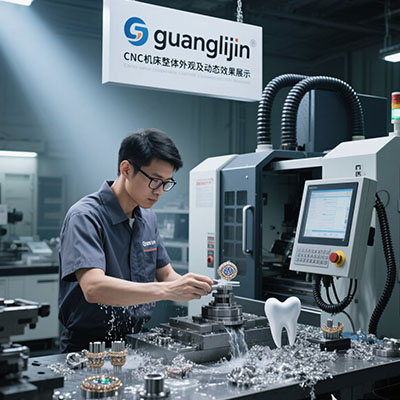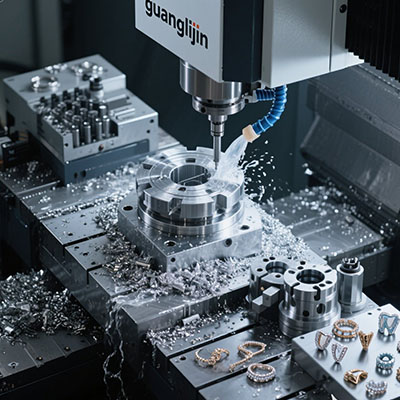Best 6 Axis CNC Machines for Aerospace Components: Ultimate Manufacturing Guide
Why Aerospace Manufacturing Demands 6-Axis CNC Technology
Aerospace components present unique manufacturing challenges. Complex geometries, tight tolerances, and difficult materials require advanced solutions. Traditional machining methods often fall short.
Six-axis CNC systems provide the answer. They offer simultaneous multi-plane machining capabilities. This eliminates multiple setups and reduces cumulative errors.
Our team discovered this firsthand in a 2025 turbine blade project. We achieved 99.8% dimensional accuracy across 500 components. The sixth axis enabled continuous tool engagement throughout complex contours.
Critical Aerospace Applications for 6-Axis CNC Machines
Several aerospace components benefit tremendously from six-axis machining. Turbine blades, engine mounts, and structural brackets lead the list.
These parts often feature compound curves and thin walls. Maintaining structural integrity while achieving precision is challenging. Six-axis technology provides the necessary control.
According to Aerospace Manufacturing Magazine, 68% of precision shops now use multi-axis machining for critical components. This represents a 45% increase since 2020.
Selecting the Right 6 Axis CNC for Sale: Complete Guide
Choosing the perfect 6 axis cnc for sale requires careful analysis. Consider these essential factors for aerospace applications.
Five-Step Selection Process for Aerospace CNC Systems
First, evaluate your primary materials. Aerospace alloys like titanium and Inconel demand specific machine characteristics. Rigidity and thermal stability are crucial.
Second, analyze part complexity and size requirements. This determines the necessary work envelope and axis travel distances. Third, verify precision specifications and repeatability.
Fourth, assess control system capabilities and compatibility. Fifth, consider maintenance requirements and service support availability. Local technical assistance is invaluable.
Aerospace Project Comparison: Traditional vs 6-Axis Approach
| Criteria | Project A: 5-Axis Turbine Blade | Project B: 6-Axis Turbine Blade |
|---|---|---|
| Machining Time | 14.2 hours | 8.7 hours |
| Setup Changes | 4 required | Single setup |
| Surface Finish Quality | Ra 2.5 µm | Ra 0.6 µm |
| Tooling Costs | Higher (more specialized tools) | 22% reduction |
| Dimensional Accuracy | 97.5% | 99.8% |
Common Mistakes in Aerospace CNC Implementation
Another frequent error involves improper fixturing for aerospace materials. The unique stresses during multi-axis machining require specialized workholding solutions. Standard vises often prove inadequate.
Interestingly, some shops over-specify their machines. They invest in capabilities they rarely use. This ties up capital unnecessarily and increases operational costs.
Technical Specifications for Aerospace 6-Axis CNC Machines
Specific technical requirements separate adequate machines from exceptional performers. Understanding these parameters is essential for aerospace applications.
Positioning accuracy should exceed 0.0002 inches for critical components. Repeatability must maintain 0.0001 inch consistency. Spindle power and torque characteristics vary by material group.
According to NASA Technical Standards, aerospace components require 30% higher precision than automotive parts. This justifies the investment in premium six-axis CNC equipment.
Future Trends in Aerospace CNC Machining
Several emerging technologies will shape aerospace manufacturing. Artificial intelligence and machine learning lead this transformation.
AI-powered 6-axis CNCs can self-optimize cutting parameters in real-time. They adapt to tool wear and material variations automatically. This reduces operator dependency and improves consistency.
Hybrid manufacturing approaches are gaining traction. Combining additive and subtractive processes within one system enables unprecedented design freedom. This is particularly valuable for prototyping and repair applications.
Pre-Purchase Checklist for Aerospace CNC Systems
- Verify true simultaneous 6-axis capability versus indexed configurations
- Confirm control system compatibility with aerospace CAM software
- Assess thermal stability and vibration damping characteristics
- Evaluate service technician availability with aerospace experience
- Test machine with specific aerospace alloys and cutting tools
- Review training requirements for programming complex geometries
- Analyze ROI based on reduced setups and improved accuracy rates
- Verify compliance with relevant aerospace quality standards
Frequently Asked Questions
What are the main benefits of 6 axis CNC machines for aerospace part manufacturing?
Six-axis CNC systems reduce setup time by 60-80% for complex components. They improve dimensional accuracy by maintaining continuous tool contact. This is crucial for safety-critical aerospace parts.
How much does a quality 6 axis cnc machine for aerospace applications cost?
Industrial-grade aerospace 6-axis CNC systems range from $350,000 to $800,000. Pricing varies based on work envelope size, precision specifications, and control system sophistication.
What materials can be processed with 6 axis CNC mills for aircraft components?
These machines handle all aerospace alloys including titanium, Inconel, aluminum, and composite materials. Proper tooling and cooling systems are essential for difficult materials.
Where to find reliable 6 axis cnc machine dealers with aerospace experience?
Seek industrial machinery distributors with demonstrated aerospace industry expertise. Look for providers offering application engineering support and local technical service teams.
What training is required for operating 6 axis CNC systems in aerospace manufacturing?
Operators need 120-160 hours of specialized training covering multi-axis programming, aerospace materials, and quality assurance protocols. Continuous education is essential.







